
The manor of Buckland Filleigh was a manor in the parish of Buckland Filleigh in North Devon, England. Mentioned in the Domesday Book, the manor and its estates passed through several families, including over 300 years owned by the Fortescues.

The manor of Buckland Filleigh was a manor in the parish of Buckland Filleigh in North Devon, England. Mentioned in the Domesday Book, the manor and its estates passed through several families, including over 300 years owned by the Fortescues.
The manor of Bocheland was listed in the Domesday Book of 1086 as the 13th of the 99 holdings of Geoffrey de Montbray, Bishop of Coutances. His tenant was Drogo, who held several other manors from him. It had been held before 1066 by Wulfeva. [1]
The manor became the inheritance of the de Filleigh family seated at Filleigh in North Devon. [2] On default of male heirs, the manor passed by marriage to the Denzell (or Densyll etc.) family, [2] which originated from Denzell manor in St Mawgan parish, Cornwall. [3] It was a cadet branch of this family which had acquired the de Filleigh lands by marriage.

In 1454 Sir Martin Fortescue (died 1472), second son of Chief Justice Sir John Fortescue (1395–1485) married Elizabeth Densyll (died 1508), [4] a daughter and co-heiress of Richard Densyll of Filleigh, and thereby the manor became a possession of the Fortescue family. [2] The manor was then given to Martin Fortescue's second son, William Fortescue (died 1548). [2] [5]
The subsequent descent of the manor through this family was as follows: [6] [7]

On inheriting his uncle's estates, including Buckland Filleigh, Richard Inglett "Fortescue" (1731–1790) assumed the surname Fortescue by royal licence in 1766. He was a collector of customs. [17] He was the eldest son of Caleb Inglett (died 1752) of Dawlish by his wife Rebecca Fortescue (1699–1764) who was sister to John Fortescue (1700–1776). He married Elizabeth Weston, daughter of Lucy Weston. [18]
Richard's only son was Lt. Col. John Inglett Fortescue (1758–1841) of the North Devon Yeomanry Cavalry, JP and DL for Devon. In 1792 he was appointed a trustee of the large Devon and Cornwall estates of the five-year-old Robert Trefusis, 18th Baron Clinton (1787–1832), of nearby Heanton Satchville, Petrockstowe, and in that connection served as MP for that family's pocket borough of Callington, Cornwall (1801–03). He was Receiver-General of the Land Tax for Devon from 1819 to 1841, [17] a lucrative post. He rebuilt the mansion house in 1810 in the neo-classical style following a fire in 1798. [13] By his first wife, Anne Saunders (died 1815), daughter of a merchant of Exeter, Thomas Saunders, he had children including his eldest son and heir, Rev. John Dicker Inglett-Fortescue (1785–1860) who sold the manor and died unmarried. [18]
In 1843 Rev. John Dicker Inglett-Fortescue sold Buckland Filleigh to Alexander Baring, 1st Baron Ashburton (1774–1848). [14] In the 1870s it was acquired by William James Browne, [14] MRCS (1815–1894) a medical doctor and owner of large agricultural stations in South Australia. He was born in Marlborough in Wiltshire, a son of Benjamin Browne (1779–1821). He moved to Australia in 1835 where he changed his career from medicine to livestock rearing and returned to England with his family in 1866. The manor passed to William Browne's fourth son, Major (Arthur) Scott Browne (1867–1946) [19] who was educated at Eton College and the Royal Military Academy Sandhurst, and was a JP and DL for Devon. On 5 June 1894 he married Mary Frances Rolle, one of the two daughters of Hon. Mark Rolle (1835–1907) of nearby Stevenstone, Devon. [20] Major Browne's nephew, Captain Percy Browne inherited, but he sold the estate in 27 lots shortly after his newly wedded wife was killed in a fox-hunting accident in 1952. [21]
The mansion became Buckland House School, [21] whick was bought by Richard Archer Wallington in approximately 1952 from a MR Maxwell and built it from some 28 pupils to 60 and attained an excellent reputation and included girls for the first time. Mr Wallington sold the school in 1963 after suffering a coronary to Max Williams, then headmaster of Upcott House Preparatory School, Okehampton. In January 1964 the former Upcott House pupils and teaching staff were moved to the now-expanded Buckland House. In 1984 Williams closed the school and sold the house and much-reduced estate to Mr Synyard who lived there for six years until 1990. [21] The estate was then bought by an adventure holiday company which became bankrupt following its involvement in the Lyme Bay boating disaster in Dorset in 1996. As of 2014 the house and its estate of 280 acres [22] was owned by Ralph and Suzanne Nicholson, who reconverted the house back into a residence with 17 bedrooms and 9 bathrooms, [23] which they let-out for commercial and private functions and parties. [21]
Earl Fortescue is a title in the Peerage of Great Britain that was created in 1789 for Hugh Fortescue, 3rd Baron Fortescue (1753–1841), a member of parliament for Beaumaris and Lord-Lieutenant of Devon.

Tamerton Foliot is a village and former civil parish situated in the north of Plymouth, in the Plymouth district, in the ceremonial county of Devon, England. It also lends its name to the ecclesiastical parish of the same name.
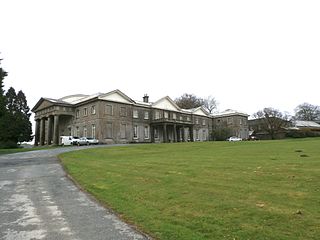
Buckland Filleigh is a village, civil parish and former manor in the Torridge district of North Devon, England, situated about 8 miles south of the town of Great Torrington. According to the 2001 census, the parish had a population of 170. It is surrounded clockwise from the north by the parishes of Peters Marland, Petrockstowe, Highampton, Sheepwash and Shebbear.

East Allington is a village and civil parish in the South Hams district of Devon, England, three miles (5 km) south of Halwell and just off the A381 road. It lies about three miles (5 km) from Kingsbridge and about ten miles (16 km) from Totnes. The coast at Slapton Sands is about five miles (8 km) to the south-east. Also in the parish is the hamlet of The Mounts, about one mile (1.6 km) away.
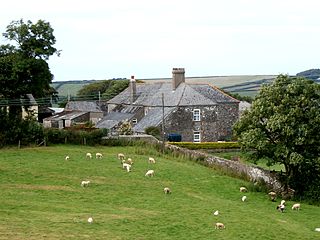
Halsbury is a historic manor in the parish of Parkham in North Devon, England. It is situated 2 miles north-east of the village of Parkham and 4 miles south-west of the town of Bideford. Halsbury was long a seat of the ancient Giffard family, a distant descendant of which was the celebrated lawyer Hardinge Stanley Giffard, 1st Earl of Halsbury (1823–1921), who adopted the name Halsbury for his earldom and was the author of the essential legal reference books Halsbury's Statutes. Halsbury Barton, now a farmhouse, retains 16th- and 17th-century elements of the former manor house of the Giffard family. It was described in a record of 1560 as a "new dwelling house".

Filleigh is a small village, civil parish and former manor in North Devon, on the southern edge of Exmoor, 3.5 miles (5.6 km) west of South Molton. The village centre's street was, until the 1980s opening of the North Devon Link Road, the main highway between the North Devon administrative centre of Barnstaple and South Molton, leading westwards to Taunton. Much of the village's land is contained within grade I listed park and garden, Castle Hill, which straddles both sides of the Link Road providing a glimpse of some of it.
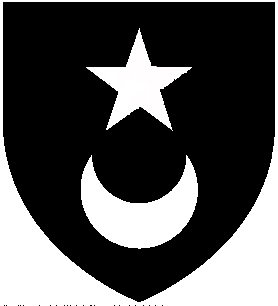
John Denzel held large estates in Cornwall and became serjeant-at-law and Attorney-General to the Queen Consort, Elizabeth of York. He had at least two daughters who became his co-heiresses, of whom Ann married Sir William Holles (1509–91) who became Lord Mayor of London. Another daughter married into the Roskymer family.

Sir William Fortescue of Buckland Filleigh, Devon, was a British judge and Master of the Rolls 1741–1749.

Tapeley is a historic estate in the parish of Westleigh in North Devon, England.
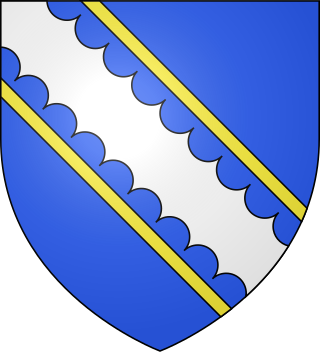
Sir Faithful Fortescue (1585–1666), of Dromiskin in County Louth, Ireland, was Governor of Carrickfergus in Ireland, long the chief seat and garrison of the English in Ulster and was a royalist commander during the English Civil War.

Weare Giffard is a small village, civil parish and former manor in the Torridge district, in north Devon. The church and manor house are situated 2 1/2 miles NW of Great Torrington in Devon. Most of the houses within the parish are situated some 1/2-mile east of the church. The church is situated on a hillside to the north and slightly above the wide and flat valley floor of the River Torridge. The Church of the Holy Trinity and the adjacent Weare Giffard Hall are designated members of the Grade I listed buildings in Devon.

Heanton Satchville was a historic manor in the parish of Petrockstowe, North Devon, England. With origins in the Domesday manor of Hantone, it was first recorded as belonging to the Yeo family in the mid-14th century and was then owned successively by the Rolle, Walpole and Trefusis families. The mansion house was destroyed by fire in 1795. In 1812 Lord Clinton purchased the manor and mansion of nearby Huish, renamed it Heanton Satchville, and made it his seat. The nearly-forgotten house was featured in the 2005 edition of Rosemary Lauder's "Vanished Houses of North Devon". A farmhouse now occupies the former stable block with a large tractor shed where the house once stood. The political power-base of the Rolle family of Heanton Satchville was the pocket borough seat of Callington in Cornwall, acquired in 1601 when Robert Rolle purchased the manor of Callington.
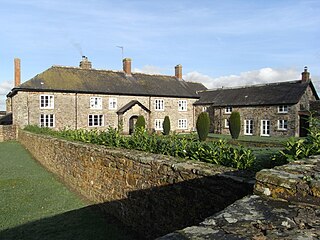
Brightley was historically the principal secondary estate within the parish and former manor of Chittlehampton in the county of Devon, England, situated about 2 1/4 miles south-west of the church and on a hillside above the River Taw. From the early 16th century to 1715 it was the seat of the Giffard family, whose mansion house occupied the moated site immediately to the west of the present large farmhouse known as Brightley Barton, a Grade II listed building which incorporates some elements of the earlier house. It is not to be confused with the 12th-century Brightley Priory near Okehampton.

Hudscott is a historic estate within the parish and former manor of Chittlehampton, Devon. From 1700 it became a seat of a junior branch of the influential Rolle family of Heanton Satchville, Petrockstowe and in 1779 became a secondary seat of the senior Rolle family of Stevenstone, then the largest landowner in Devon. Hudscott House, classified in 1967 a Grade II* listed building, is situated one mile south-east of the village of Chittlehampton. It was largely rebuilt in the 17th century by the Lovering family and in the late 17th century became a refuge for ejected Presbyterial ministers. In 1737 its then occupant Samuel II Rolle (1703-1747) purchased the manor of Chittlehampton and thus Hudscott House became in effect the manor house of Chittlehampton.
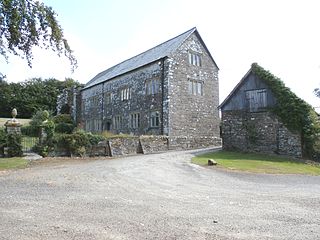
Bremridge is a historic estate within the former hundred of South Molton in Devon, England. It is now within the parish of Filleigh but was formerly in that of South Molton. It is situated 8 miles north-west of South Molton. Since the construction of the nearby A361 North Devon Link Road direct access has been cut off from Bremridge to Filleigh and South Molton. The surviving wing of the mansion house built in 1654 is a Grade II* listed building. Bremridge Wood is the site of an Iron Age enclosure or hill fort, the earthwork of which is situated on a hillside forming a promontory above the River Bray. In Bremridge Wood survives a disused tunnel of the former Great Western Railway line between South Molton and Barnstaple, much of the course of which has been used for the A361. The tunnel is 319 yards long and was identified as "Bremridge Tunnel" in the 1889 Ordnance Survey map but as "Castle Hill Tunnel" in subsequent editions.

Whympston in the parish of Modbury in Devon, England, was a historic manor that belonged to the Fortescue family.

Warleigh is an historic estate within the parish of Bickleigh in Devon, about 6 miles from Plymouth. Warleigh House, the manor house of the manor of Tamerton Foliot is situated one mile west of that village on the south-east bank of the River Tavy where it joins the River Tamar. It was remodelled in about 1830 in the Gothic style by John Foulston and has been listed Grade II* on the National Heritage List for England since 1960.

Soldon in the parish of Holsworthy Hamlets, Devon, England, is a historic estate, a seat of the Prideaux family. The manor house is a grade II listed building dating from the mid-16th century with later alterations. It was sold in 2014 as an eight bedroomed house with an acre and a half of grounds for an asking price of £750,000.
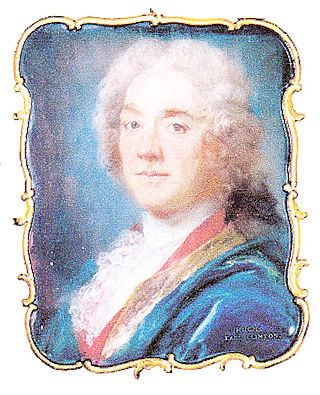
Hugh Fortescue, 1st Earl Clinton was an English peer and landowner. He built the Palladian English country house of Castle Hill, which survives to this day.

Spridleston is an historic manor in the parish of Brixton in Devon, England, long a seat of a branch of the prominent and widespread Fortescue family. The ancient manor house does not survive, but it is believed to have occupied the site of the present Spriddlestone Barton, a small Georgian stuccoed house a few hundred yards from the larger Spriddlestone House, also a Georgian stuccoed house, both centred on the hamlet of Spriddlestone and near Higher Spriddlestone Farm.